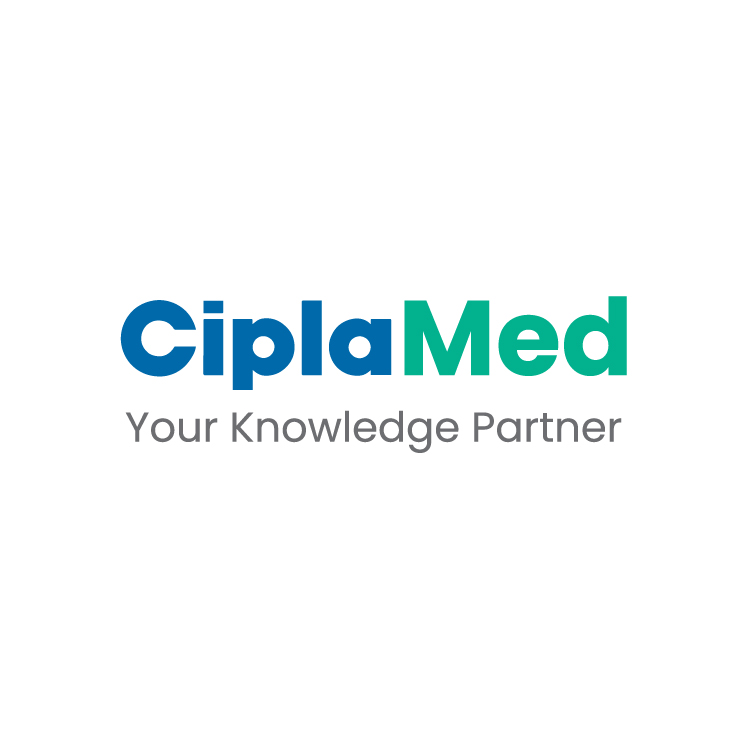ACR 2025: Highlights from Day 2
Effectiveness of IV Cyclophosphamide and Mycophenolate Mofetil in the Treatment of Pediatric Systemic Lupus Erythematosus with Lupus Nephritis
Presenter: adrienne katrin guiang-valerio
This single-center retrospective study evaluated 231 children (≤18 years) with lupus nephritis (LN) treated with cyclophosphamide (CYC) or mycophenolate mofetil (MMF).
While both treatments were effective, CYC showed a faster renal response (13 vs. 24 months). MMF had a higher rate of treatment switch due to poor response, while CYC switches were more often due to preference. Complete renal response incidence was 4.86 per 100 person-months overall, 4.91 in the CYC group and 4.71 in the MMF group; 77.01% of CYC patients achieved complete response versus 84.21% in MMF, patients who switched treatments achieved significantly better renal outcomes. Factors like female sex, tuberculosis, and lower prednisone doses increased the likelihood of switching. Early treatment adjustments and personalized approaches may improve long-term outcomes in childhood-onset LN.
Effect of bDMARDs and tsDMARDS on Diffuse Interstitial Lung Disease Associated with Rheumatoid Arthritis: Systematic Review and Meta-analysis
Presenter: Stéphane HILLIQUIN
This systematic literature review and meta-analysis assessed the pulmonary safety of biologic (bDMARDs) and targeted synthetic DMARDs (tsDMARDs) in rheumatoid arthritis-associated interstitial lung disease (RA-ILD).
Fifteen observational studies involving 958 patients were analyzed. The most common ILD patterns were usual interstitial pneumonia (48%) and non-specific interstitial pneumonia (40%). Across treatments—including rituximab, abatacept, JAK inhibitors, TNF inhibitors, and tocilizumab—no significant changes were observed in lung function (FVC or DLCO). Rituximab showed a non-significant trend toward improved FVC. Overall, bDMARDs and tsDMARDs may help stabilize lung function in RA-ILD, but further research is needed to determine their long-term impact.
Is Transient Synovitis of the Hip Preclinical Juvenile SpA? A Follow-up Study
Presenter: Anirudh Bandu
Transient synovitis (TS) of the hip is typically self-limited in children, but recurrence may indicate early enthesitis-related arthritis (ERA) or juvenile spondylarthritis (SpA).
A retrospective chart review (2002–2022) and follow-up interviews revealed that one-third of contacted TS patients experienced recurrence. These individuals showed significantly higher rates of chronic back and peripheral joint pain, often involving hips, knees, and ankles. Pain absence was strongly linked to non-recurrent cases. Findings suggest recurrent TS may be an early marker for ERA or juvenile SpA, highlighting the need for pediatric rheumatology follow-up and future prospective studies to confirm diagnosis and risk factors.
Association Between Anxiety and Tender Swollen Joint Difference in Patients with Rheumatoid Arthritis
Presenter: Clarice Lin
This study analyzed baseline data from 276 RA patients in the CPIRA study to assess the link between anxiety and tender-swollen joint difference (TSJD), a marker of nociplastic pain. Mean age was 54.7 years; 82% were female. 38% had TSJD ≥7, and mean PROMIS anxiety score was 53.8.
Greater anxiety was significantly associated with higher TSJD (adjusted OR per 5-unit increase = 1.05). Higher BMI also correlated with higher TSJD. These findings suggest that anxiety contributes to pain sensitivity in RA, supporting the need for integrated pain and psychological management strategies in patients with high TSJD.
Real-World Comparative Effectiveness of Tofacitinib, Tumor Necrosis Factor Inhibitors, and Interleukin-17 Inhibitors among Patients with Axial Spondyloarthritis
Presenter: Jeffrey Curtis
This real-world study assessed 829 tofacitinib (TOFA), 14,056 inhibitorsof tumor necrosis factor (TNFi), and 4,472 interleukin-17 (IL-17i)treatment episodes in axial spondyloarthritis (axSpA) patients using a claims-based effectiveness algorithm.
After propensity score weighting, 28% (TOFA), 32% (TNFi), and 28% (IL-17i) met all effectiveness criteria over 6 months. No significant difference in effectiveness failure was observed (HR TNFi vs TOFA = 0.92; IL-17i vs TOFA = 1.00). TOFA patients had higher prior advanced therapies (AT) use (60%) and baseline medication use. Findings suggest TOFA offers comparable short-term effectiveness to TNFi and IL-17i, supporting its use in axSpA management pending longer-term data.
Effects of IL-17A Inhibition on Entheseal Osteoblast and Fibroblast Dynamics in Psoriatic Arthritis: Insights from the EBIO Biopsy Study
Presenter: Maria Gabriella Raimondo
This study investigated molecular changes in active enthesitis in psoriatic arthritis (PsA) patients treated with IL-17A inhibitor secukinumab. Ten biologic-naïve patients underwent ultrasound-guided biopsies before and after 6 months of therapy.
Secukinumab significantly reduced PD signals (P=0.0156), DAPSA (P=0.0078), and SPARCC scores (P=0.0039). Imaging mass cytometry showed decreased IL-17A+ cells, while spatial transcriptomics revealed increased DKK3/CD200+ fibroblasts and reduced osteoblast-related transcription. These findings suggest IL-17A blockade promotes resolution of entheseal inflammation via immune and stromal remodeling.
Long-Term Impact of Secukinumab on the Prevention of Psoriatic Arthritis in Patients with Psoriasis: a 5-year Pooled Analysis of the ERASURE, FIXTURE and SCULPTURE Studies
Presenter: Ulrich Mrowietz
This analysis evaluated the effectiveness of secukinumab 300 mg in preventing psoriatic arthritis (PsA) in 673 patients with psoriasis (PsO) over 5 years and indirectly compared it with historical rates in biologic-naïve patients.
Secukinumab demonstrated strong long-term efficacy in PsO. 97.9% patients did not experience PsA, yielding an exposure-adjusted incidence rate of 0.76—about 72% lower than historical rates in biologic-naïve patients (yearly rate of 2.7/100 patients) from another 8y study. Additionally, 63.9% achieved PASI 90 and 36.5% achieved PASI 100 at year 5 of secukinumab treatment. The study suggested that secukinumab may offer protective effects against PsA while maintaining long-term skin clearance in PsO patients.
MEthotrexate versus TOcilizumab for Treatment of Giant Cell Arteritis (METOGiA trial): a Multicenter, Randomized, Controlled trial
Presenter: Maxime Samson
This open label, non-inferiority trial compared subcutaneous methotrexate (MTX, 0.3 mg/kg/week) and tocilizumab (TCZ, 162 mg/week) in 218 giant cell arteritis patients on glucocorticoids (GC).
The primary endpoint (percentage of patients alive, without relapse after initial remission or deviation from the GC taper regimen at week 78) resulted in 9% difference (46% TCZ vs. 37% MTX) and hence MTX was not non-inferior to TCZ (P=0.054). Further, MTX was non-inferior to TCZ for remission rate with/without low-dose prednisone. At W52, TCZ was better than MTX in maintaining remission and preventing relapse.
Use of JAK Inhibitors in Medium- and Small-Sized Vasculitides: A Retrospective Multicenter Study
Presenter: Caterina Ricordi
This retrospective observational study evaluated the off-label use of JAK inhibitors (JAKi) in 14 medium- and small-vessel vasculitis patients; most had refractory disease and were on glucocorticoids (GC).
JAKi were prescribed for refractory disease in 85.7% and for GC sparing in 28.6%. Tofacitinib, upadacitinib, and baricitinib, either alone/with disease modifying anti-rheumatic drugs achieved clinical response in 78.6% patients. However, infections occurred in 35.7% cases (mostly with upadacitinib) and relapse occurred in 21.4%. At follow-up, JAKi were continued in 78.6%. JAKi exhibited promising efficacy as alternative therapy in refractory vasculitis, but safety concerns highlighted the need for careful patient selection and prophylactic measures.
Age of Disease Onset and Risk of Serious Infection with Anti-TNF Use in Older Adults with Rheumatoid Arthritis
Presenter: Jiha Lee
This study used the FORWARD (The National Databank for Rheumatic Diseases) data (2001–2019) to evaluate the risk of serious infection (SI) in older adults (≥60 years) with late-onset RA (LORA) vs. young-onset RA (YORA) initiating anti-TNF therapy.
The crude SI incidence among 1219 LORA and 6030 YORA patients was 34.2 vs. 27.9 per 1000 patient-years. Kernel propensity-matched analysis showed no significant SI risk difference (HR: 0.89, 95% CI 0.60–1.34). Cox regression revealed increased SI risk with older age at TNF initiation (HR: 1.6–1.7), prior infection (HR: 1.9), and recent long-term glucocorticoid use (HR: 2.2). Age at RA onset did not independently impact SI risk associated with TNF initiation. Reducing GC exposure and mitigating infection may be key to diminish the risk and to optimize the outcomes in older adults initiating TNF therapy.
The Impact of Secukinumab on Bone Density in Patients with Ankylosing Spondylitis: A 1-Year Retrospective Study
Presenter: yifan cui
This study compared the 1-year effects of secukinumab (an IL-17 inhibitor) and adalimumab (a TNF-α inhibitor) on bone mineral density (BMD) in 53 patients with ankylosing spondylitis (AS). The study also ascertained the role of baseline inflammatory biomarkers in predicting BMD changes.
Both the medications significantly reduced CRP and ESR (P<0.01). Secukinumab showed greater reductions in systemic immune-inflammation index (SII; −235.79 vs −64.81, P=0.006) and platelet-to-lymphocyte ratio (PLR; −28.87 vs +1.92, P=0.012). Adalimumab modestly increased T4 BMD (+6.38 mg/cm³, P=0.029), but no significant changes in overall thoracolumbar BMD or intergroup differences in BMD trajectories were found. Baseline inflammatory markers did not correlate with either biologic agent in terms of BMD response. IL-17 and TNF-α inhibition had similar skeletal effects over 12 months.
Effective Prevention of Psoriatic Arthritis with Secukinumab: A 5-Year Observation from the SERENA Study
Presenter: Uta Kiltz
This study evaluated the 5-year effectiveness of secukinumab (an IL-17A inhibitor) in prevention of psoriatic arthritis (PsA). Participants from the SERENA study with active psoriasis (PsO) with nail involvement without PsA (n=292 mean age 49.2 years; BMI 29.3 kg/m²), received ≥16 weeks of secukinumab before enrollment.
Over 5 years (1022 patient-years), 98.3% did not develop PsA, yielding an exposure-adjusted incidence rate (EAIR) of 0.49 per 100 patient-years (95% CI: 0.16–1.14). Compared to historical non-biologic PsO cohorts (EAIR: 2.7), this reflects an ~82% reduction in annual incidence rate of PsA. Skin outcomes were sustained: 63% achieved PASI 90 and 39% PASI 100. These findings support secukinumab’s potential role in PsA prevention and sustained long-term control over skin changes.
ACR 2025, 24th-29th Oct 2025, Chicago, Illinois, USA.



.webp?updated=20241028052153)
